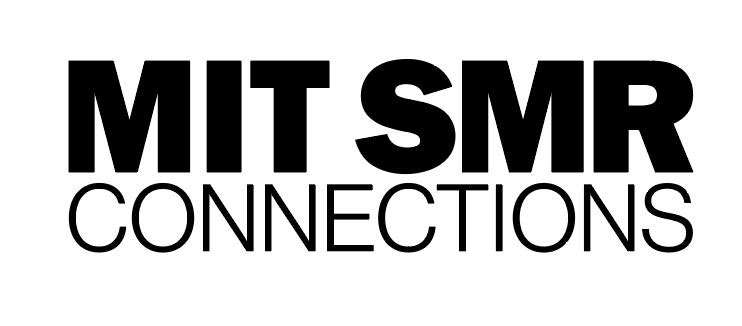Very rarely do we, as leaders, have a chance to go back to the drawing board and re-imagine our leadership philosophies and practices, or physical workplace dynamics, for that matter. The sudden migration of knowledge workers from corporate offices, to home offices – and in some cases, basements, and kitchen counters— has forced us to rethink the very nature of work, how teams work together, and how we will continue to adapt.
It will likely never return to the pre-pandemic ‘business as usual’ some may lament for. But perhaps, the silver lining to the unprecedented change that has been thrust upon us, is that we have a unique opportunity to reimagine the future of work, for the better.
What will the future of work look like? The answer is hybrid.
It’s natural to focus on what was lost: in-person meetings, travel, the comforts of office space and restaurants, and the prescribed culture that an office environment is supposed to represent. The truth is, the business world and standard working practices have been operating in the status quo for decades, with incremental oscillations between remote working and various iterations of office spaces – from open plan, to hot-desking pods, to cubicles and traditional walled offices.
If we’re honest, the way we’ve been working has been ripe for disruption for a long time. Now is the time for leaders to focus – not on what was lost, but the opportunities that bear out in a new hybrid working model, that has longevity long after ‘the office’ reopens. Here are five shifts we are likely to see:
1. ‘Working from home’ is no longer the productivity scapegoat
The stigma associated with “working from home” has gone by the wayside. If anything, many employees are more productive in a home-setting, minus the ugly commute in traffic, and minus the boisterous banter of the open-office floorplan. On the other hand, some employees feel that their performance will be negatively impacted by the demands of family-life, interfering with the workday. It’s up to leaders to reassure their employees that remote workers are not perceived as less productive, or less committed to the job, and that it’s not one-size-fits-all. The most successful workplaces will be the ones that embrace the symbiotic marriage of in-person and virtual, equally, and the ability to seamlessly blend the two. Of course, the right collaboration technology can make this transition to a hybrid working world not just possible, but exponentially more productive and profitable.
2. The way we work, is about what works for you [employees]
Just as there are different styles of learning, there are also different ways of working. Some employees relish the work from home environment, but others miss the atmosphere of the office. Leaders understand that teams are built from communication and community, not from command and control. It is vital that these same technologies that we use for formal meetings and huddles can also be leveraged for the informal, casual interaction that people crave.
Perhaps most important lesson from the last year, no matter where you sit on the issue – remote, virtual, or hybrid – is to start from a place of mutual trust. When you respect that employees have unique work-life/home-life circumstances to balance, and that there are times of day where they have the space and flexibility to be at their best, you create a self-motivated environment to collaborate and contribute in far more productive ways — whether that’s in person, or virtually, or a combination.
3. A hybrid workforce will require a new take on ‘adaptive leadership’
Outdated leadership styles and practices have been the bugbear for many businesses for too long. Today, organizations must get beyond the hand-to-hand combat way of problem solving, to a more holistic approach that leads with culture, and augments with technology.
Converting problems into growth opportunities depends upon your ability to create a workplace experience that taps into the unique dynamic, culture, and skills of your team in this new hybrid environment. To do that, you need to embrace an adaptive leadership mindset and practice, that strips away corporate hierarchy, where leadership becomes a state-of-mind, rather than attached to a job title. It’s a way of doing business, that instead, becomes laser-focus on solving complex, systemic problems as a collective team. Hybrid leadership is the next generation of ‘adaptive leadership’. It’s leadership fuel-injected by advanced technology, to add value where it packs the biggest punch.
4. Management by Wandering Around (MBWA) still applies
With so many employees now working from their homes, it seemed difficult to meet organically and to brainstorm on projects and priorities in an informal way, like you would in an office setting. But the MBWA practice is still a deliberate and constructive way to engage and motivate teams in this new world of work. It’s just that the “wandering” is now virtual. Collaboration technology has advanced far beyond merely scheduling meetings. Advanced collaboration platforms, like Webex, for example, naturally lend to meaningful, informal face-to-face huddles, in which body language, active listening, and free dialog can be as easy as it ever was.
5. Technology will become a game-changer in taking Inclusion mainstream
The concept and practice of inclusion came to the forefront of every boardroom and every living room in 2020. In this new hybrid working world, inclusion takes on yet another dimension – the ultimate workforce differentiator – creating equality, access, and untapped collective value between remote, on-site, and hybrid workers. If the aim of the game is truly about driving more innovative, productive, profitable outcomes, pushing against all the negative market forces, then where you sit (physically or figuratively) is no longer relevant. The latest advances in collaboration technology allow us to overcome the barriers of language, geography, social/economic level, and technical proficiency. Now, imagine a hybrid world where businesses can scale innovation rapidly, by tapping the richest skill sets, experiences, and points of view, from anywhere in the world. Imagine a world where every employee truly has a seat at the table, and true equal opportunity for personal and professional growth.
The future of hybrid working is ours to define…
We know the old ways of working haven’t really been working, for some time. This phenomenon of hybrid work will continue to challenge our leadership skills and assumptions. But it presents an incredible opportunity for growth, innovation, and more healthy, inclusive, productive workforces. The story of this paradigm shift in work is still being written. But it is ours to write.
Stay tuned for my next blog in the ‘Future of Work’ series where I share how to “lean-in” to a hybrid workforce model and hybrid leadership mindset.





